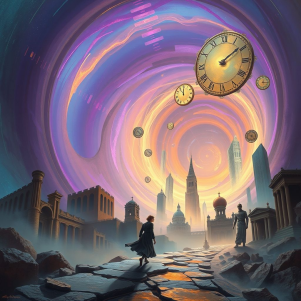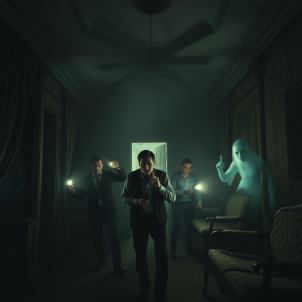
Beyond the Veil: Uncovering the Truth Behind Ghostly Encounters
For centuries, ghostly encounters have fascinated and intrigued humans. From eerie whispers in the dead of night to unexplained apparitions, the phenomenon of ghostly activity has sparked intense debate and speculation. While some dismiss these events as mere fantasy or hallucination, others claim that they have experienced inexplicable and terrifying encounters with the unknown. In this article, we will delve into the world of ghostly encounters, exploring the various theories and explanations behind these enigmatic events.
The Psychology of Ghostly Encounters
One of the most widely accepted explanations for ghostly encounters is the psychological factor. Many experts believe that our minds are capable of playing tricks on us! In times of stress, grief, or trauma, the brain can create illusions or hallucinations that are often misinterpreted as ghostly apparitions. This phenomenon is known as pareidolia, where the brain recognizes patterns and shapes in random or ambiguous stimuli. For example, a person who has recently lost a loved one may see their face in a crowd or hear their voice in the wind. While these experiences can be unsettling, they are often a manifestation of the mind’s attempt to cope with emotional pain.
The Role of Environment and Atmosphere
The environment and atmosphere in which ghostly encounters occur can also play a significant role in shaping our perceptions. For instance, old buildings with a history of trauma or tragedy can create an eerie and unsettling atmosphere, making it more likely for people to experience ghostly apparitions. This can be attributed to the phenomenon of suggestion, where our expectations and prior knowledge of a place can influence our perceptions. Additionally, the power of suggestion can be amplified by the presence of others, creating a collective hysteria that can lead to mass sightings of ghostly activity.
The Science of Ghost Hunting
In recent years, the field of ghost hunting has gained significant attention, with many investigators using advanced technology to detect and measure paranormal activity. Equipment such as EMF meters, infrared cameras, and digital recorders are used to capture evidence of ghostly encounters. While some of these methods have yielded intriguing results, the scientific community remains skeptical about the validity of these findings. Many experts argue that the equipment used in ghost hunting is not designed to detect paranormal activity and that the results can be easily explained by natural causes such as electromagnetic interference or equipment malfunction.
The Paranormal Perspective
Despite the skepticism of the scientific community, many people claim to have experienced genuine ghostly encounters that cannot be explained by natural causes. These individuals often report feeling a chill or a presence, seeing apparitions or shadows, or hearing unexplained noises. Some believe that ghostly encounters are evidence of an afterlife or a spiritual realm, where the deceased continue to exist in some form. Others propose that ghostly activity is the result of residual energy or imprints left behind by traumatic events. While these theories are intriguing, they remain unproven and are often based on anecdotal evidence.
The Cultural Significance of Ghostly Encounters
Ghostly encounters have been a staple of folklore and mythology for centuries, with many cultures having their own unique interpretations and explanations for these events. In many Asian cultures, ghostly encounters are believed to be a sign of good luck or a warning of impending danger. In Western cultures, ghostly encounters are often seen as a sign of evil or malevolence. The cultural significance of ghostly encounters highlights the complex and multifaceted nature of these events, which can be influenced by a range of factors including history, tradition, and personal experience.
Conclusion
Ghostly encounters remain a fascinating and enigmatic phenomenon, with many theories and explanations attempting to explain these events. While some attribute ghostly encounters to psychological factors, environmental influences, or natural causes, others believe that they are evidence of a paranormal or spiritual realm. Ultimately, the truth behind ghostly encounters may lie in a combination of these factors, and it is up to each individual to draw their own conclusions about the nature of these events. Whether you believe in ghosts or not, one thing is certain – ghostly encounters will continue to captivate and intrigue us, inspiring us to explore the unknown and push the boundaries of human understanding.


